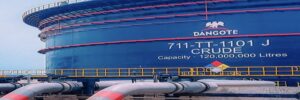Seplat Energy, listed in Nigeria and London, has announced its intention to double its overall crude oil output through its recently acquired onshore properties from ExxonMobil Corporation.
The senior management team of the company has voiced its determination to increase its production capacity from 50,000 barrels per day to approximately 120,000 bpd within a six-month timeframe.
Eleanor Adaralegbe, Seplat’s chief financial officer, articulated this during an interview with the Financial Times.
“The assets have received very minimal investments until now. We anticipate that once we engage, there will be a significant opportunity for further expansion,” she stated.
The company obtained Mobil Producing Nigeria Unlimited (MPNU) from ExxonMobil in December 2024, as the latter became part of a group of International Oil Companies (IOCs) that exited the nation or relinquished onshore operations.
As a result of the $1. 28 billion acquisition, Seplat is now among the largest domestic oil and gas producers, possessing an asset portfolio comprising 11 onshore oil blocks, 48 oil and gas fields, three export terminals, and five gas processing facilities.
Roger Brown, Seplat’s Chief Executive Officer, indicated that the company manages 16 percent of Nigeria’s current production capacity.
Seplat is anticipated to operate the new assets in collaboration with the Nigerian National Petroleum Company Limited (NNPCL) as stipulated by the Petroleum Industry Act.
CEO Brown remarked that the company’s commitment to enhancing production aligns with President Bola Tinubu’s objective of boosting Nigeria’s oil output.
“We have no reservations about collaborating with NNPC . . . There’s been a significant transformation with President Tinubu, acknowledging that increased production is an effective means of generating foreign currency and supporting the national currency,” Brown asserted.
Samson Ezugworie, Seplat’s Chief Operating Officer, added that the company intends to revive dormant oil wells included in the newly acquired assets.
“We have over 600 wells drilled, yet only about 200 of them are currently operational. We possess a considerable number of idle wells requiring rejuvenation and a swift return to production,” he stated.
Seplat contested the views of critics who argued that onshore assets divested by IOCs were of little value and left for local enterprises. Ezugworie expressed confidence that the company’s new assets possess “substantial potential and opportunity” for production, with abundant reserves still waiting to be developed.




